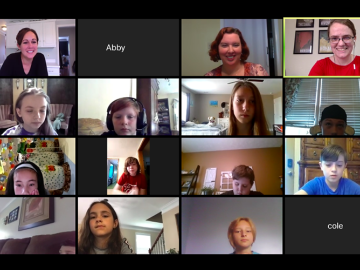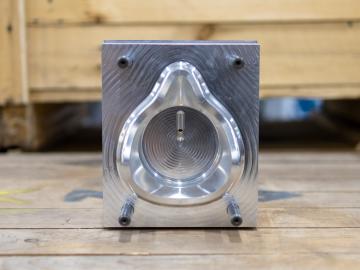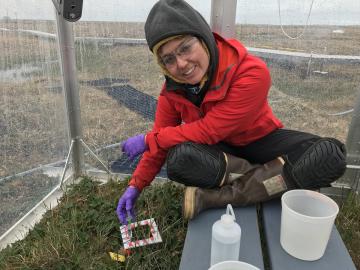
Filter News
Area of Research
- (-) Energy Science (62)
- (-) Nuclear Science and Technology (9)
- Advanced Manufacturing (5)
- Biology and Environment (52)
- Biology and Soft Matter (1)
- Electricity and Smart Grid (1)
- Functional Materials for Energy (1)
- Fusion and Fission (2)
- Fusion Energy (1)
- Materials (42)
- Materials for Computing (7)
- National Security (13)
- Neutron Science (41)
- Quantum information Science (2)
- Supercomputing (36)
News Topics
- (-) 3-D Printing/Advanced Manufacturing (27)
- (-) Bioenergy (13)
- (-) Coronavirus (10)
- (-) Environment (24)
- (-) Frontier (2)
- (-) Molten Salt (2)
- (-) Nanotechnology (4)
- (-) Neutron Science (6)
- Advanced Reactors (10)
- Artificial Intelligence (5)
- Big Data (2)
- Biology (4)
- Biomedical (4)
- Biotechnology (1)
- Buildings (13)
- Chemical Sciences (6)
- Clean Water (2)
- Composites (3)
- Computer Science (14)
- Critical Materials (1)
- Cybersecurity (5)
- Energy Storage (32)
- Exascale Computing (2)
- Fossil Energy (1)
- Fusion (7)
- Grid (14)
- High-Performance Computing (2)
- Hydropower (1)
- Isotopes (4)
- Machine Learning (5)
- Materials (10)
- Materials Science (13)
- Mathematics (1)
- Microscopy (5)
- National Security (3)
- Nuclear Energy (21)
- Partnerships (5)
- Physics (2)
- Polymers (5)
- Quantum Science (2)
- Security (1)
- Simulation (2)
- Space Exploration (2)
- Summit (2)
- Transportation (22)
Media Contacts

Scientists at the Department of Energy Manufacturing Demonstration Facility at ORNL have their eyes on the prize: the Transformational Challenge Reactor, or TCR, a microreactor built using 3D printing and other new approaches that will be up and running by 2023.
An international team of scientists found that rules governing plant growth hold true even at the edges of the world in the Arctic tundra.

Researchers at the Department of Energy’s Oak Ridge National Laboratory are refining their design of a 3D-printed nuclear reactor core, scaling up the additive manufacturing process necessary to build it, and developing methods

With Tennessee schools online for the rest of the school year, researchers at ORNL are making remote learning more engaging by “Zooming” into virtual classrooms to tell students about their science and their work at a national laboratory.

In the 1960s, Oak Ridge National Laboratory's four-year Molten Salt Reactor Experiment tested the viability of liquid fuel reactors for commercial power generation. Results from that historic experiment recently became the basis for the first-ever molten salt reactor benchmark.

In the fight against the COVID-19 pandemic, it’s a race against the clock not only to find a vaccine but also to supply healthcare workers with life-saving equipment such as face shields, masks and test kits.

While some of her earth system modeling colleagues at ORNL face challenges such as processor allocation or debugging code, Verity Salmon prepares for mosquito swarms and the possibility of grizzly bears.

Brian Post, a researcher in large-scale additive manufacturing at ORNL, has been selected as a recipient of the 2020 Outstanding Young Manufacturing Engineer Award by SME.

Sometimes conducting big science means discovering a species not much larger than a grain of sand.

Oak Ridge National Laboratory researchers working on neutron imaging capabilities for nuclear materials have developed a process for seeing the inside of uranium particles – without cutting them open.


